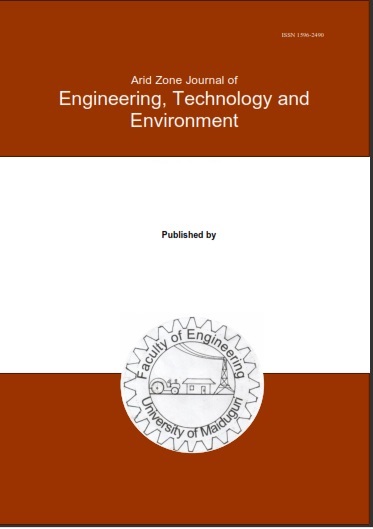Abstract
Engine performance and emission characteristics of biodiesel produced from yellow oleander, soyabeans residual cooking oil and fossil diesel was carried out in a compression ignition engine. The engine was operated at constant speed of 2160rpm and variable torque (4, 7.5 and 10.6Nm). The oil extracted from yellow oleander by mechanical press had a yield of 60%. Physicochemical properties of the oil were determined. The chemical composition of the biodiesels was analyzed and the result revealed that yellow oleander and soyabeans residual cooking oils contain 86.2% and 85.3% methyl esters respectively. The engine performance tests of the yellow oleander, soyabeans residual cooking oil and fossil diesel at a constant speed 2160rpm and variable torque (4, 7.5 and 10.6Nm)., were found to be 2.40kw, 1.70kw and 0.91kw for brake power and 51412.57 MN/m2, 36376.87 MN/m2 and 19401.02 MN/m2 for brake mean effective pressure respectively. Similarly, at constant speed of 2160 rpm and variable torque (4, 7.5 and 10.6Nm), it was also found that in comparison to fossil diesel fuel, the emission reduction for soyabean residual cooking oil biodiesel at engine torque of 4Nm was 67% for CO, 47% for CO2, 100% for HC and 40% increase for NOx. However, there was no remarkable change in emission reduction when the engine torque was increased from 4 to 10.6Nm at constant engine speed of 2160 rpm. Biodiesel from yellow oleander and residual cooking can be used as part of substitutes for compression ignition engines to reduce the effects of greenhouse gases emissions caused by fossil diesel fuel combustion from heavy duty equipments.

This work is licensed under a Creative Commons Attribution-NonCommercial-NoDerivatives 4.0 International License.
Copyright (c) 2023 Arid Zone Journal of Engineering, Technology and Environment published by University of Maiduguri, Nigeria

